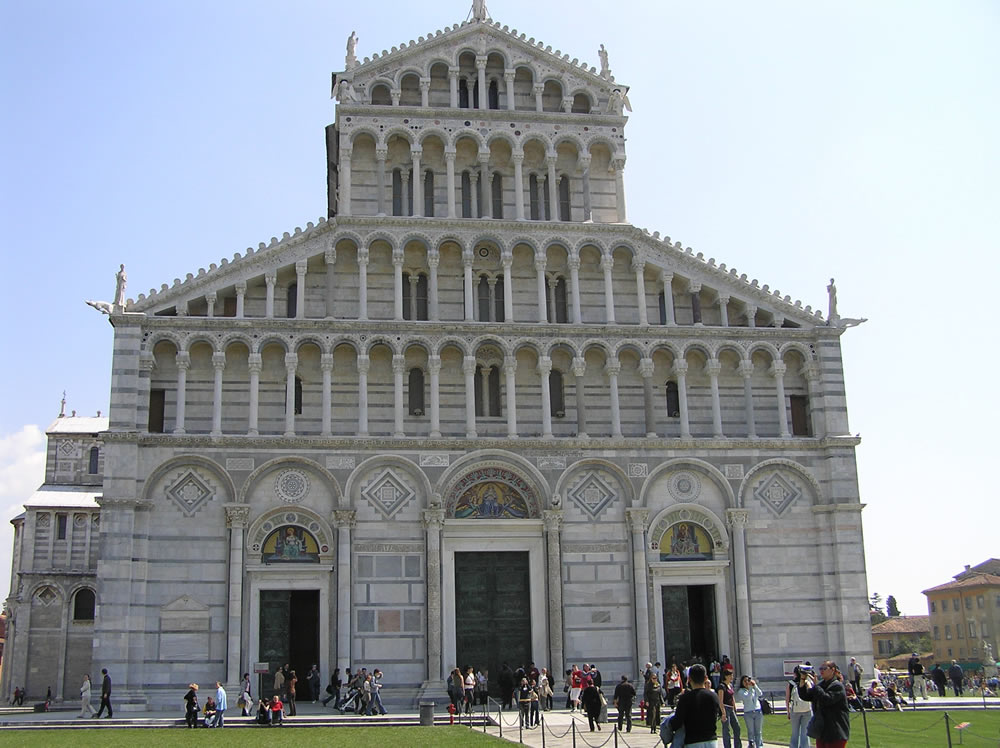Questo articolo è disponibile anche in:
![]() Français
Français ![]() Deutsch
Deutsch ![]() Español
Español ![]() Italiano
Italiano
The Cathedral of Pisa, dedicated to Santa Maria Assunta, is the main example of a religious building in the Pisan Romanesque style, it was built between 1064 and 1118, the year of its consecration, and expanded in the following centuries. Various architects worked on its construction including Buscheto, Rainaldo, Guglielmo and Biduino.
A MASTERPIECE OF ROMANESQUE ARCHITECTURE
Masterpiece of Romanesque architecture, the cathedral of Pisa is a grandiose set of stylistic elements due to the presence, during the works, of people of different cultures who with their contribution have allowed the magnificent fusion of different styles such as Arab, Byzantine , Lombard etc.

THE FACADE
The facade was the work of Rainaldo who executed it in the second half of the 12th century. There are three portals with bronze doors and it is decorated with columns, inlays, marble mosaics, the upper part of the facade is opened by single, double and triple lancet windows, with columns and marble inlays. The sides of the Cathedral are decorated with arches, the structure is dominated by a dome surrounded by a 14th century loggia. On the side of the building towards the Leaning Tower is the remarkable Porta di San Ranieri with bronze doors by Bonanno Pisano. The apse has blind arches with two orders of loggias on columns.
THE INTERIOR
The interior of the Cathedral has an oriental aspect, full of light and with the space that tends to multiply due to the particular arrangement of the columns. The church has a Latin cross plan with five naves, while the transept has three naves. The central nave is supported by granite columns and has a beautiful wooden coffered ceiling and is opened by 14th-century stained glass windows that illustrate the story of the Old Testament. Even the minor naves are full of columns, the windows are decorated with delightful 15th-century stained glass windows by Alessio Baldovinetti.
Noteworthy in the right transept: the Chapel of San Ranieri with rich sculptural decoration, the Tomb of Arrigo VII by Tino di Camaino from the 14th century. Under the Dome is the wonderful Pergamum from the early 14th century by Giovanni Pisano, one of the masterpieces of Italian Gothic sculpture. In the presbytery there are some paintings by Andrea del Sarto, while in the apse there are some frescoes by Ghirlandaio and pictorial works by Beccafumi, Sodoma, Ventura Salimbeni and other artists.
The bell tower of the Cathedral, the famous Leaning Tower is located in an atypical position, on the right side of the apse and detached from the Cathedral.
Questo articolo è disponibile anche in:
![]() Français
Français ![]() Deutsch
Deutsch ![]() Español
Español ![]() Italiano
Italiano
